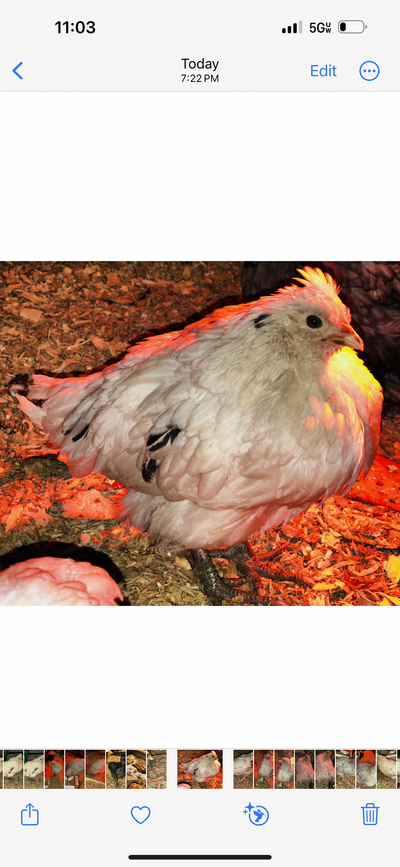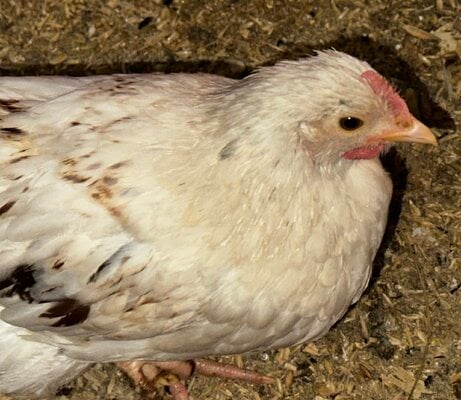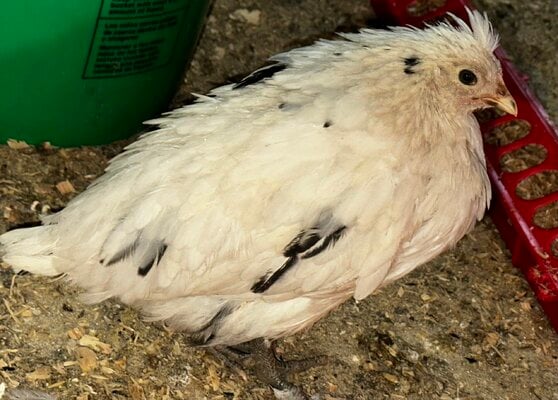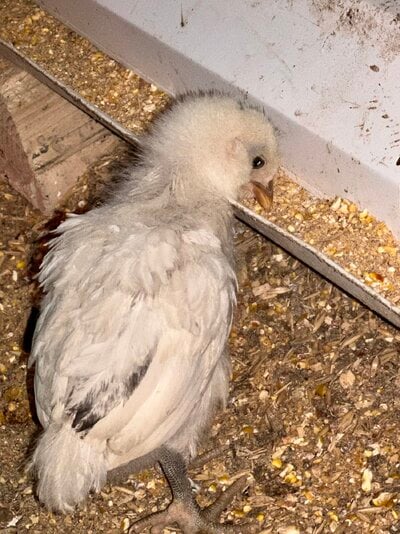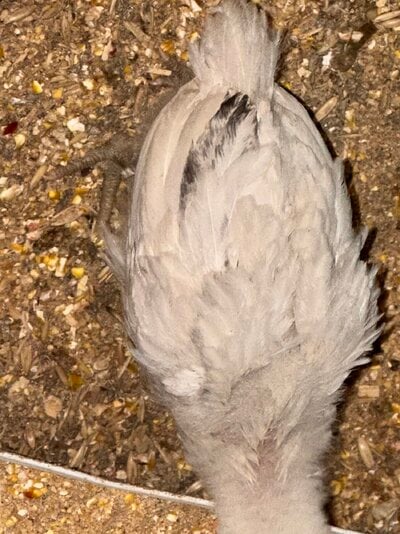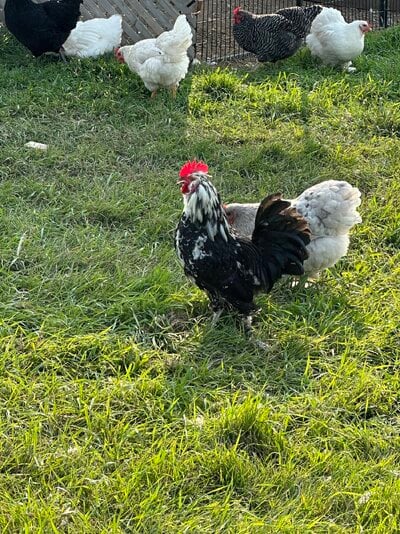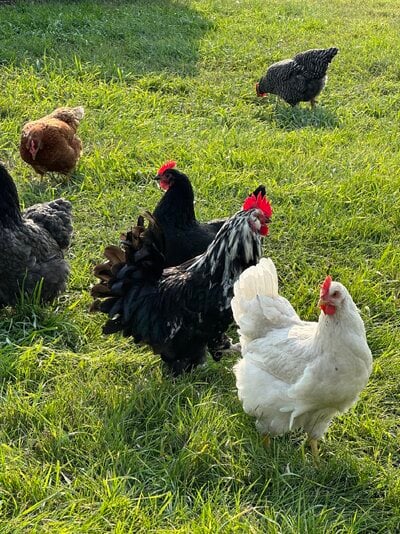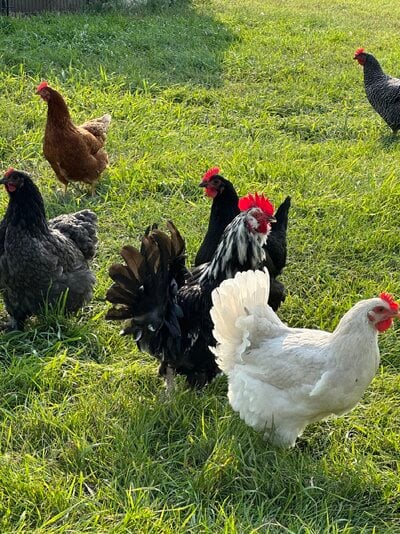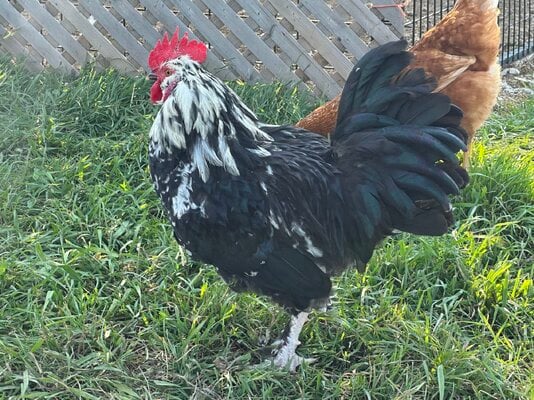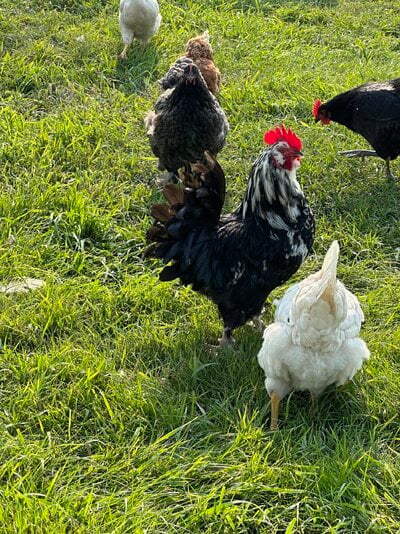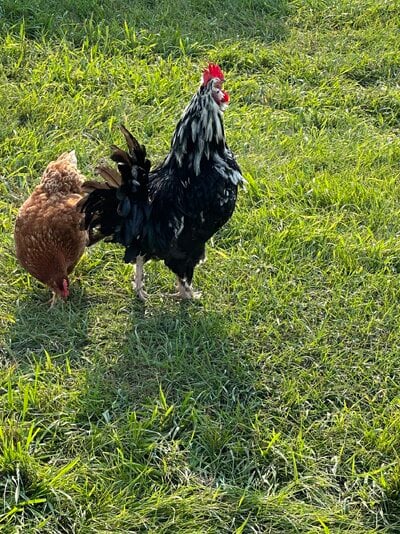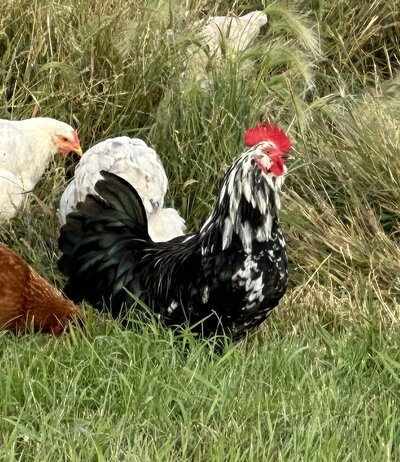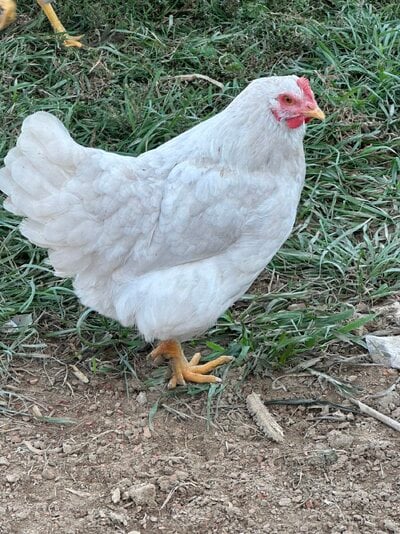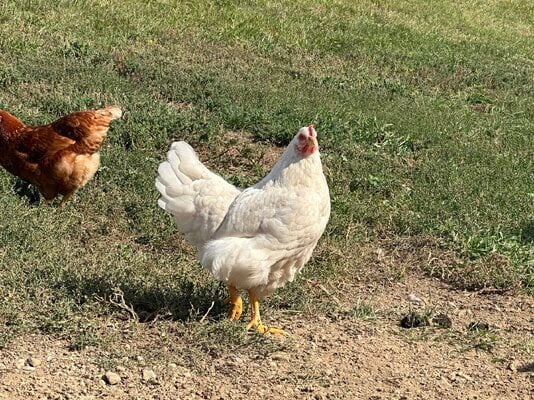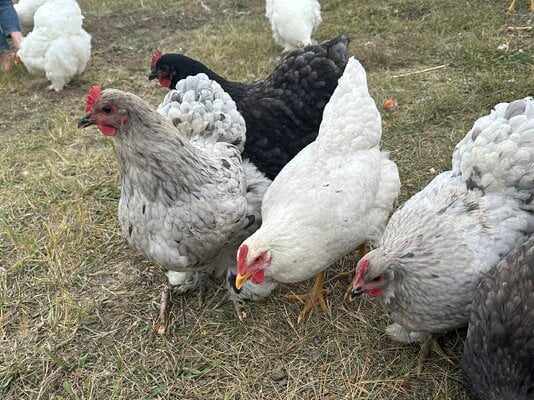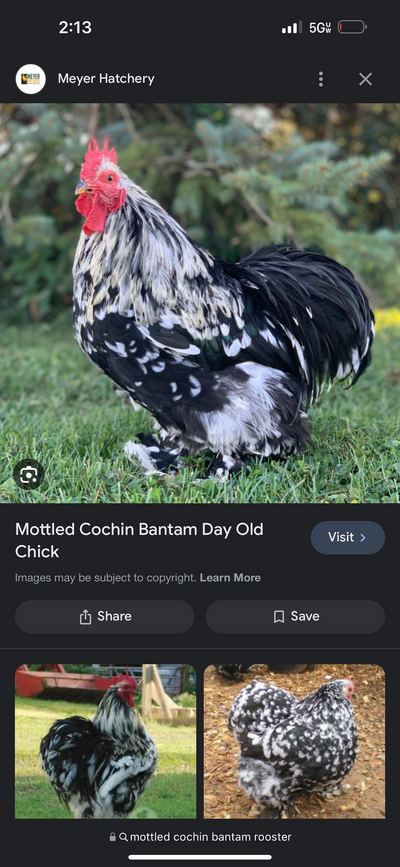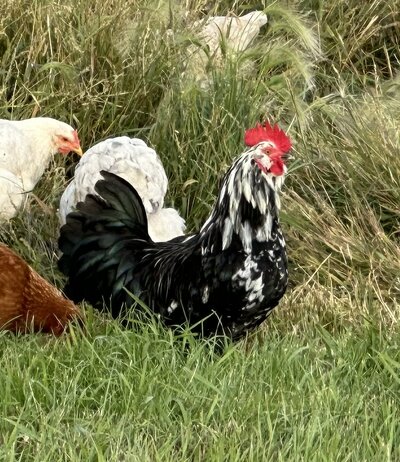Ashleyboz
Songster
- Oct 27, 2023
- 106
- 143
- 106
We have been hatching our Smokey Pearl hen eggs that have been running with our Black Mottled Cochin bantam. We are getting what looks like our Smokey pearl hens with the yellow legs and feet and red combs. Then we are getting some with dark feed and tiny combs and paint looking. While watching them it seems the ones that resemble Smokey pearls are larger and act like roosters. The smaller dark legged ones are chill and mind their business. Could the cross happen to be sex linked?  Or am I jumping the gun? I do know with the rooster and Smokey’s we will get paints. I did notice some are getting red to orange spots also. Could anyone tell me what I could expect?
Or am I jumping the gun? I do know with the rooster and Smokey’s we will get paints. I did notice some are getting red to orange spots also. Could anyone tell me what I could expect?

